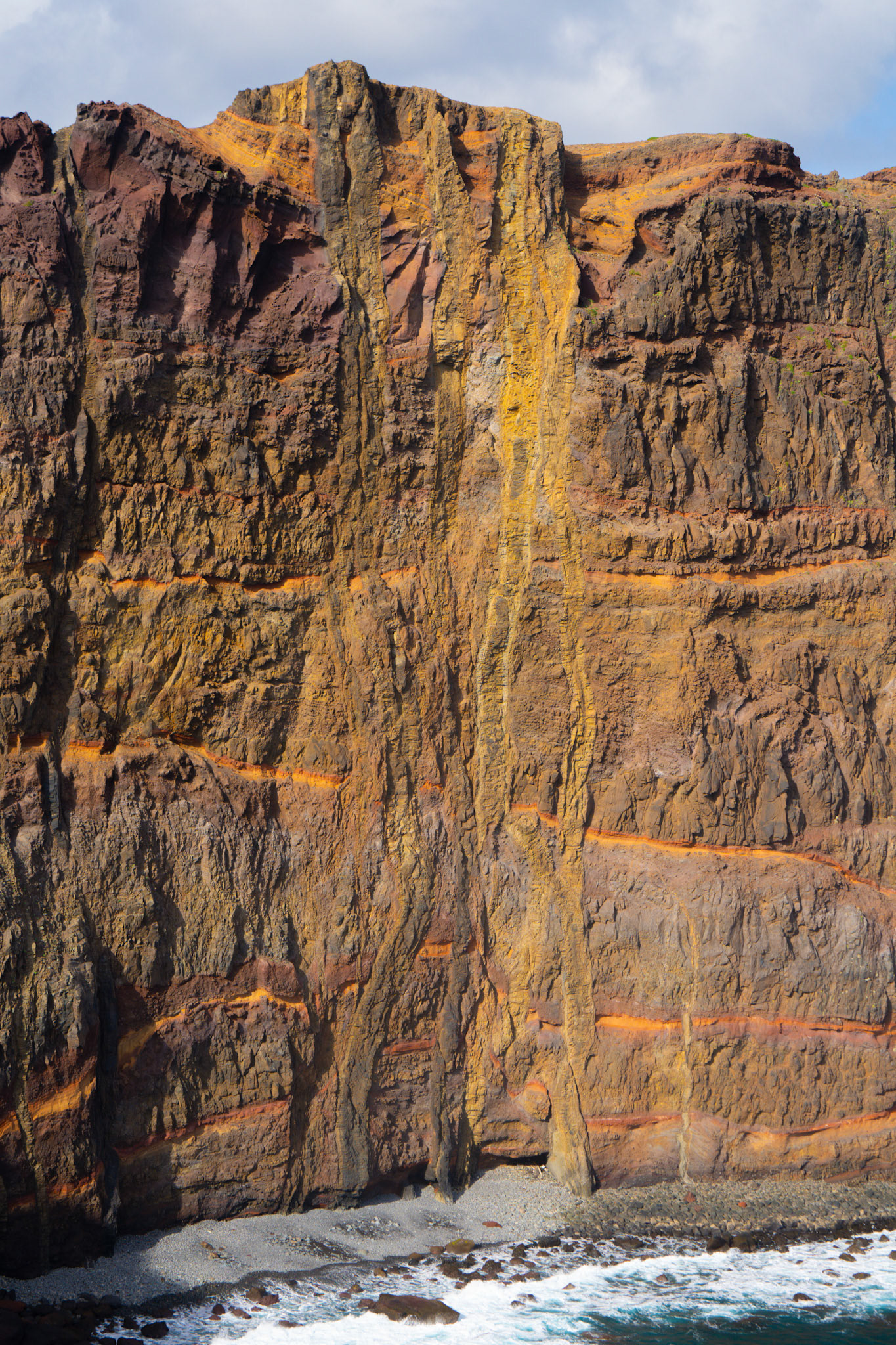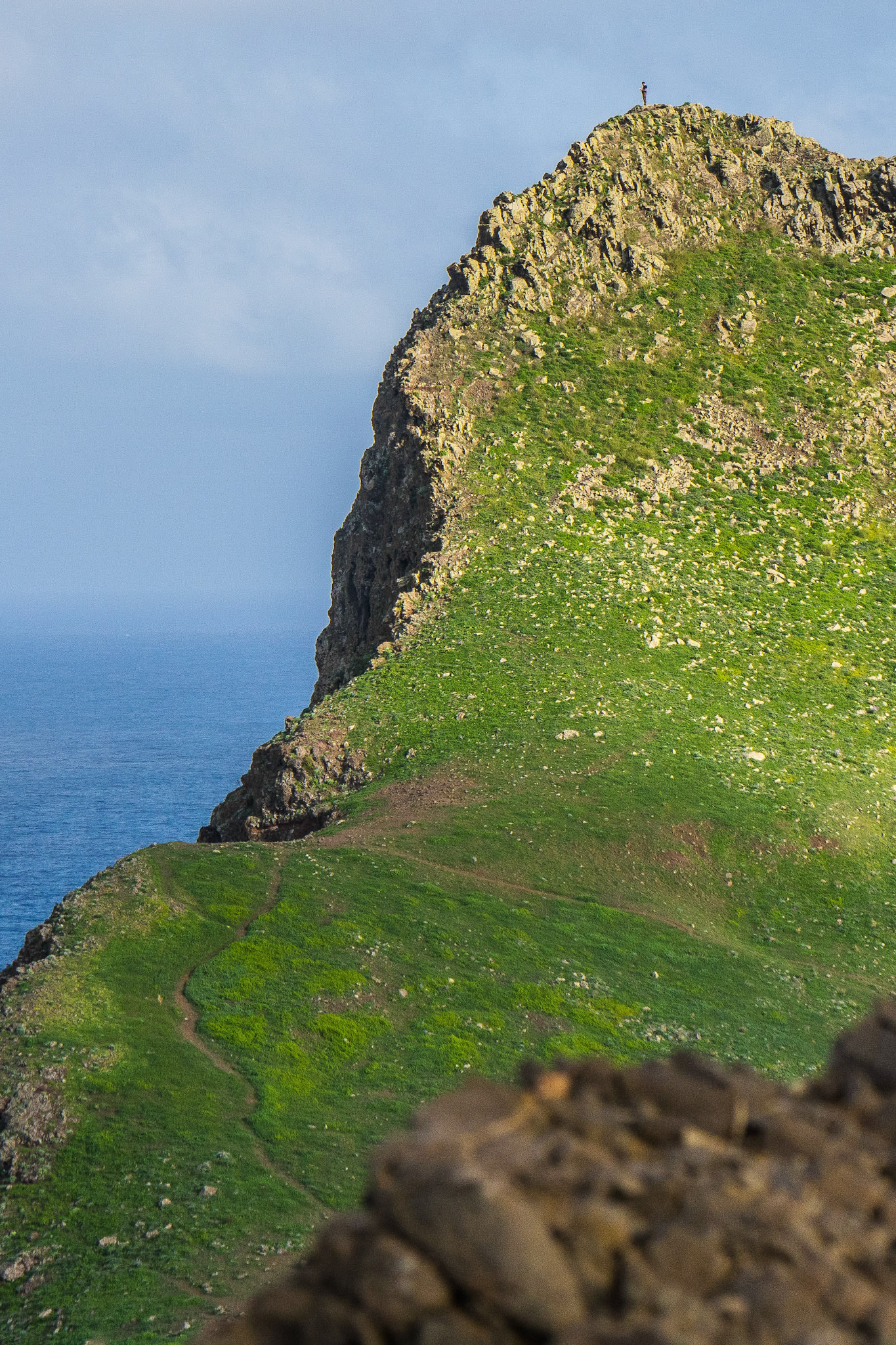Ponta de São Lourenço
Lock and Lizard

Security first! I

Security first! II

Rock I

Rock II

Lock and Lizard

Vapo Trips

Canoos

Reader and Rock

Reader and Rock
Madeira: Island of Eternal Spring
Madeira, often referred to as the "Island of Eternal Spring," is a Portuguese gem in the Atlantic Ocean, renowned for its stunning natural beauty, rich culture, and deep-rooted traditions. This volcanic archipelago, located about 1,000 kilometers southwest of Lisbon, comprises the main island of Madeira, the smaller Porto Santo, and the uninhabited Desertas Islands. Madeira is famous for its breathtaking landscapes, from the towering, verdant cliffs plunging into the azure sea to the mystical laurel forests, recognized as a UNESCO World Heritage Site.
Since its discovery in the 15th century, Madeira has attracted travelers from around the world. The island served as an essential stopover for Portuguese explorers en route to Africa and the Americas. Today, it is a haven for hikers, nature lovers, and culture enthusiasts. Madeira’s history is intricately linked with the Portuguese Empire, evident in the charming colonial villages, ancient terraced vineyards, and traditional festivals, or "Festas," celebrated throughout the year.
Madeira’s natural environment is one of its main draws. The rugged coastline and mountainous interior offer a variety of microclimates and landscapes. The Laurisilva Forest, a relic of the ancient laurel forests that once covered Southern Europe, is home to a unique array of flora and fauna. Hiking trails like the famous Levadas, ancient irrigation channels, wind through these lush forests, offering breathtaking views of deep valleys, waterfalls, and the endless ocean.
The island's mountainous terrain is equally impressive. Pico Ruivo, Madeira’s highest peak, rises majestically into the sky, rewarding hikers with a panoramic view that reveals the island's rugged topography in all its glory. In the São Vicente region, visitors can explore caves and lava tunnels formed by volcanic activity millions of years ago, providing a fascinating insight into the island’s geological history.
Madeira’s cultural diversity is reflected in its vibrant towns and villages. Funchal, the capital, is a lively blend of tradition and modernity. The old town, with its cobbled streets and historic buildings, tells stories of the past, while the newer districts serve as a hub for art, music, and gastronomy. The Mercado dos Lavradores market is a feast for the senses, where the colors and scents of local flowers, fruits, and spices reflect the island’s rich agricultural heritage.
The people of Madeira are known for their hospitality and pride in their island culture. The soulful "Fado" music, heard in the island's taverns, expresses the deep connection between the people and the sea. Local festivals, especially the Flower Festival in spring and the Carnival, showcase Madeira’s vibrant traditions, bringing the community together in a celebration of life, nature, and history.
Photography on Madeira
Since I was on a trip to Porto Santo and only spent a few days on Madeira, I only explored the northeastern part of the island. Yet, even here, it was a nature overload and a photographer's paradise. Madeira offers a diverse range of landscapes and cultural scenes to capture. The island's dramatic coastlines, with steep cliffs and hidden coves, provide stunning subjects for landscape photography. The volcanic origins of Madeira have created a unique terrain that shifts from lush forests to arid peaks within a short distance, making it a playground for those who enjoy capturing nature in all its forms.
One of the prime locations for landscape photography is Pico do Arieiro, where sunrise shoots can yield breathtaking images of a sea of clouds illuminated by the first light of day. The rugged coastline at Ponta de São Lourenço, with its stark, windswept cliffs and the deep blue of the Atlantic, is another must-visit spot for panoramic shots.
Madeira's cultural richness also offers endless opportunities for street and documentary photography. The colorful markets, traditional festivals, and local villages like Câmara de Lobos, with its fishing boats and lively atmosphere, are perfect for capturing the authentic spirit of the island. The capital, Funchal, provides a mix of old and new, with historic architecture and modern street art offering contrasting yet complementary photographic subjects.
The island's unique light conditions, often soft and diffused due to its location in the Atlantic, create an ideal environment for capturing vibrant yet natural images. Whether you are shooting the lush landscapes, the vibrant local life, or the intricate details of Madeira's flora and fauna, this island is a photographer's dream destination, where every corner holds the promise of a stunning shot.
Madeira - Ponta de São Lourenço
Ponta de São Lourenço, the easternmost tip of Madeira, is a rugged, windswept peninsula known for its dramatic landscapes and unique geological features. This narrow strip of land, stretching out into the Atlantic Ocean, is unlike any other part of the island. Its barren, rocky terrain, shaped by volcanic activity millions of years ago, stands in stark contrast to Madeira’s lush interior. The cliffs here plunge sharply into the sea, creating a breathtaking panorama of jagged coastlines and deep blue waters.
Ponta de São Lourenço holds historical significance as it was one of the first places encountered by European explorers when they arrived in Madeira in the early 15th century. The discovery of Madeira is often credited to Portuguese sailors João Gonçalves Zarco and Tristão Vaz Teixeira, who were part of Prince Henry the Navigator’s expeditions. In 1419, they were blown off course by a storm and landed on this remote part of the island. This accidental discovery led to the colonization of Madeira, which became one of the first territories in the Portuguese Empire.
The early explorers would have been struck by the raw beauty and ruggedness of Ponta de São Lourenço, which, to this day, remains largely untouched by human development. The peninsula is now a protected nature reserve, home to rare species of plants and birds that thrive in its harsh conditions. Visitors can explore this stunning landscape via a well-marked hiking trail that offers spectacular views of the surrounding ocean and the neighboring Desertas Islands.
The unique geological formations, including basalt columns and ancient lava flows, make Ponta de São Lourenço a fascinating destination for geologists and nature enthusiasts alike. The colors of the landscape—ranging from deep reds and browns to vibrant greens—change with the light, creating endless opportunities for photographers. The wind-swept cliffs and the relentless waves crashing against the rocks give the area a sense of untamed wilderness, reminiscent of what the first European explorers might have encountered over 600 years ago.
Ponta de São Lourenço is a place where history and nature converge, offering a glimpse into the past while showcasing the raw, untamed beauty of Madeira. Whether you’re interested in the island’s history, geology, or simply looking to experience one of the most breathtaking landscapes in the Atlantic, this peninsula is a must-visit destination on Madeira.